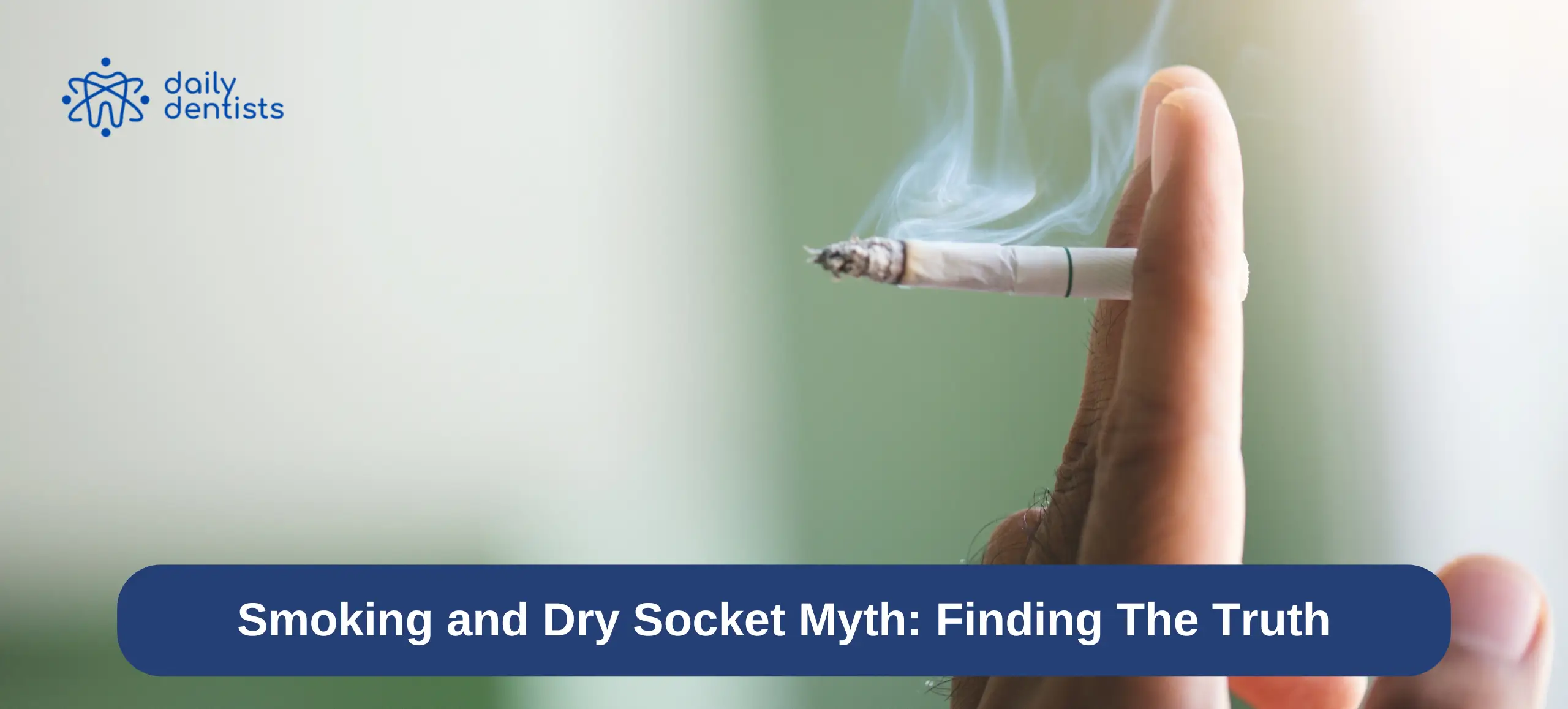Smoking and dry socket myth discussions are common, particularly among those facing tooth extractions. Understanding the connection between smoking and dry socket can prevent complications and promote better oral health. This article aims to debunk myths and provide valuable insights into managing post-extraction care effectively.
What is a Dry Socket?
A dry socket, also known as alveolar osteitis, is a painful dental issue that can develop after a tooth extraction. Typically, a blood clot forms at the extraction site, serving as a protective barrier over the exposed bone and nerves. This clot also serves as a foundation for new tissue growth. However, when this clot dissolves or dislodges prematurely, the bone and nerves become exposed, leading to severe pain and delayed healing.
Symptoms of a dry socket include:
Intense pain a few days after extraction
Visible bone in the socket
Bad breath or a weird taste in the mouth
Swelling and a feeling of a dry, empty socket
Dry socket affects about 2-5% of patients after tooth extraction. It is more common following the removal of lower molars. Understanding the causes and symptoms of dry socket is crucial for effective post-extraction care and pain management.
Why Does Smoking Cause Dry Socket?
Smoking significantly increases the risk of developing a dry socket. Here’s how:
Reduced Blood Flow: Nicotine in cigarettes constricts blood vessels, reducing blood flow to the gums. Adequate blood flow is essential for clot formation and healing. With diminished circulation, the extraction site receives fewer nutrients and less oxygen, impairing the healing process.
Impaired Clot Formation: The chemicals in tobacco interfere with the blood clotting mechanism. This disruption can prevent a stable clot from forming at the extraction site, increasing the likelihood of a dry socket.
Contamination from Smoke Particles: Inhaling smoke introduces harmful particles into the mouth. These particles can irritate the extraction site and interfere with clot stability, leading to complications.
Studies show that smokers are significantly more likely to develop dry sockets compared to non-smokers. Some estimates suggest that smokers are twice as likely to experience this painful condition. This heightened risk underscores the importance of abstaining from smoking before and after tooth extraction.
Smoking After Tooth Extraction: The 24-Hour Rule
The first 24 hours after a tooth extraction are critical for healing. During this period, the formation of a stable blood clot is vital. Smoking during this time can have several adverse effects:
Dislodging the Clot: The act of inhaling smoke creates suction in the mouth, which can dislodge the newly formed blood clot. This is a primary cause of dry socket.
Chemical Exposure: Exposure to nicotine and other harmful chemicals in cigarettes can impede the healing process and increase inflammation at the extraction site.
Dental professionals consistently advise against smoking for at least 24 hours post-extraction. Some suggest extending this period to 48-72 hours to ensure optimal healing. Research supports these recommendations, highlighting the increased risk of dry socket among those who smoke shortly after tooth extraction.
Smoking After Tooth Extraction with Gauze
Some smokers attempt to mitigate the risks by using gauze over the extraction site while smoking. This method involves placing a piece of gauze over the socket to protect it from smoke and particles. While this technique may offer some protection, it has notable limitations:
Limited Protection: Gauze cannot completely block all smoke and chemicals from reaching the extraction site. Small particles can still infiltrate and cause irritation.
Risk of Dislodging the Clot: The act of placing and adjusting the gauze can disturb the clot, especially if not done carefully.
Here’s a step-by-step guide on using gauze correctly:
Wash Hands Thoroughly: Always start with clean hands to avoid introducing bacteria.
Moisten the Gauze: Dampen the gauze slightly to help it stay in place.
Position Carefully: Place the gauze gently over the extraction site, ensuring it covers the area completely.
Avoid Excessive Movement: Try to keep the gauze as still as possible while smoking.
Even with these precautions, the risks associated with smoking after an extraction remain high. It is crucial to understand that using gauze is not a foolproof method and does not guarantee protection against dry socket.
How to Prevent Dry Socket
Preventing dry socket involves several best practices:
Follow Dentist’s Instructions: Adhere to all aftercare guidelines provided by your dentist. These instructions are tailored to promote healing and prevent complications.
Avoid Certain Foods and Beverages: Stay away from hard, crunchy, or spicy foods that can irritate the extraction site. Hot beverages can also dislodge the clot.
Practice Proper Oral Hygiene: After the first 24 hours of extraction rinsing your mouth gently with saltwater. Please don’t swish or spit vigorously, as this can disturb the clot.
Manage Cravings: Find alternative ways to cope with nicotine cravings. Nicotine patches, gums, or other cessation aids can be effective during the healing period.
Use Healing Aids: Over-the-counter pain relievers and prescribed medications can help manage discomfort and inflammation. Antiseptic mouthwashes can reduce the risk of infection.
Stay Alert for Signs of Dry Socket: Be vigilant for symptoms such as severe pain, visible bone, and bad breath. Seek professional help immediately if these signs appear.
Final Thoughts on Smoking and Dry Socket Myth
The smoking and dry socket myth is more than just a myth; it is a well-documented risk. Smoking after tooth extraction significantly increases the likelihood of developing a dry socket due to its adverse effects on blood flow, clot formation, and wound contamination.
By understanding these risks and following best practices for post-extraction care, patients can minimize complications and promote faster healing. Abstaining from smoking, especially in the critical first 24 hours, is essential for a smooth recovery. For smokers, seeking alternative ways to manage cravings during this period can make a substantial difference in oral health outcomes.
Common Queries About Smoking and Dry Socket Myth
Does smoking really cause dry socket?
Yes, smoking significantly increases the risk of developing a dry socket. The chemicals in cigarettes, especially nicotine, reduce blood flow and impair clot formation. Inhaling smoke can also dislodge the clot and introduce harmful particles to the extraction site, further increasing the risk.
Will gauze prevent dry socket while smoking?
Using gauze over the extraction site while smoking may offer some protection but is not foolproof. Gauze can help reduce the exposure of the extraction site to smoke and particles, but it cannot completely block all harmful substances. Additionally, placing and adjusting gauze can dislodge the clot, which is crucial for healing.
How long after tooth extraction can I smoke without gauze?
It is best to avoid smoking for at least 24 to 72 hours after a tooth extraction. This period is critical for clot formation and initial healing. While using gauze can provide some protection, it’s not a guaranteed solution. Waiting as long as possible before smoking again, ideally following your dentist’s advice, will significantly reduce the risk of dry socket.
Will one cigarette give me a dry socket?
Even smoking one cigarette can increase the risk of developing a dry socket. The act of inhaling smoke can dislodge the blood clot, and the chemicals in the cigarette can impair healing. It’s crucial to avoid smoking entirely during the initial healing period to minimize the risk of complications.

